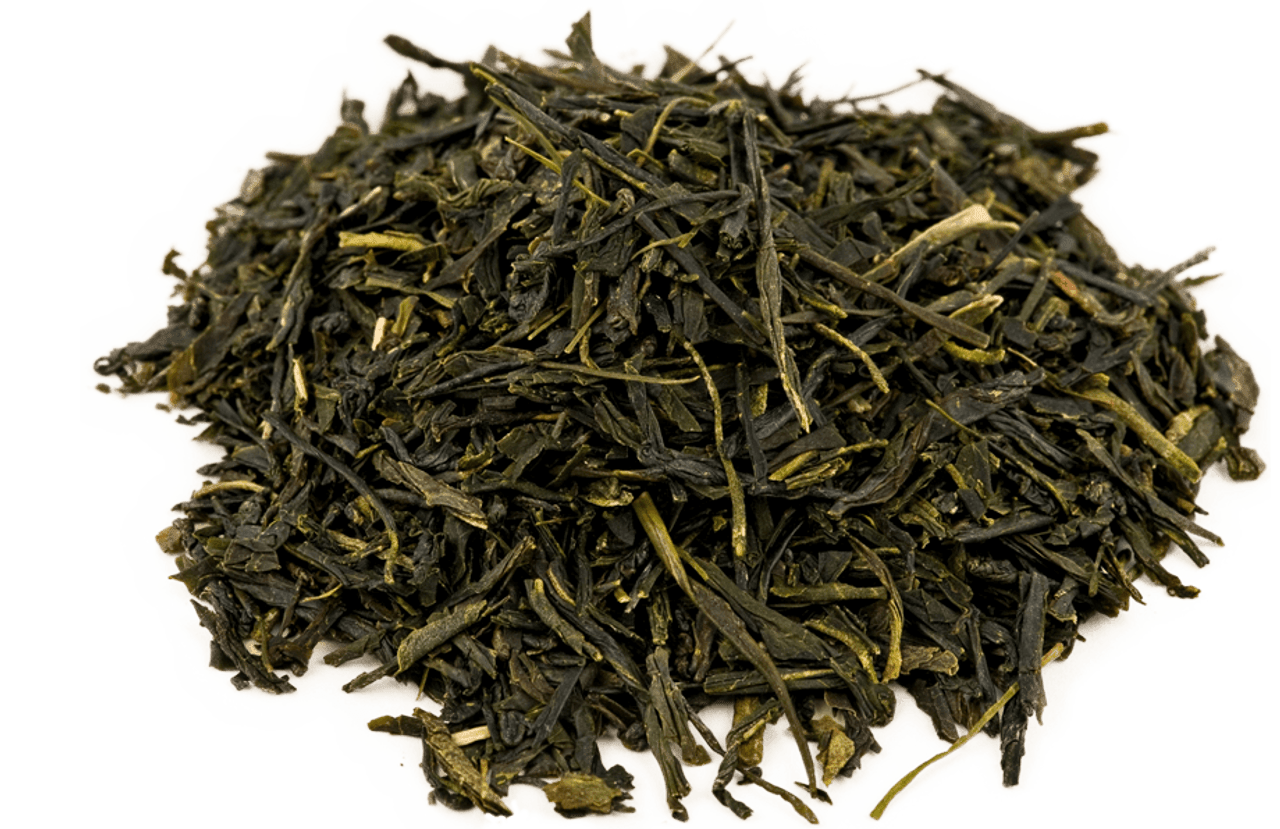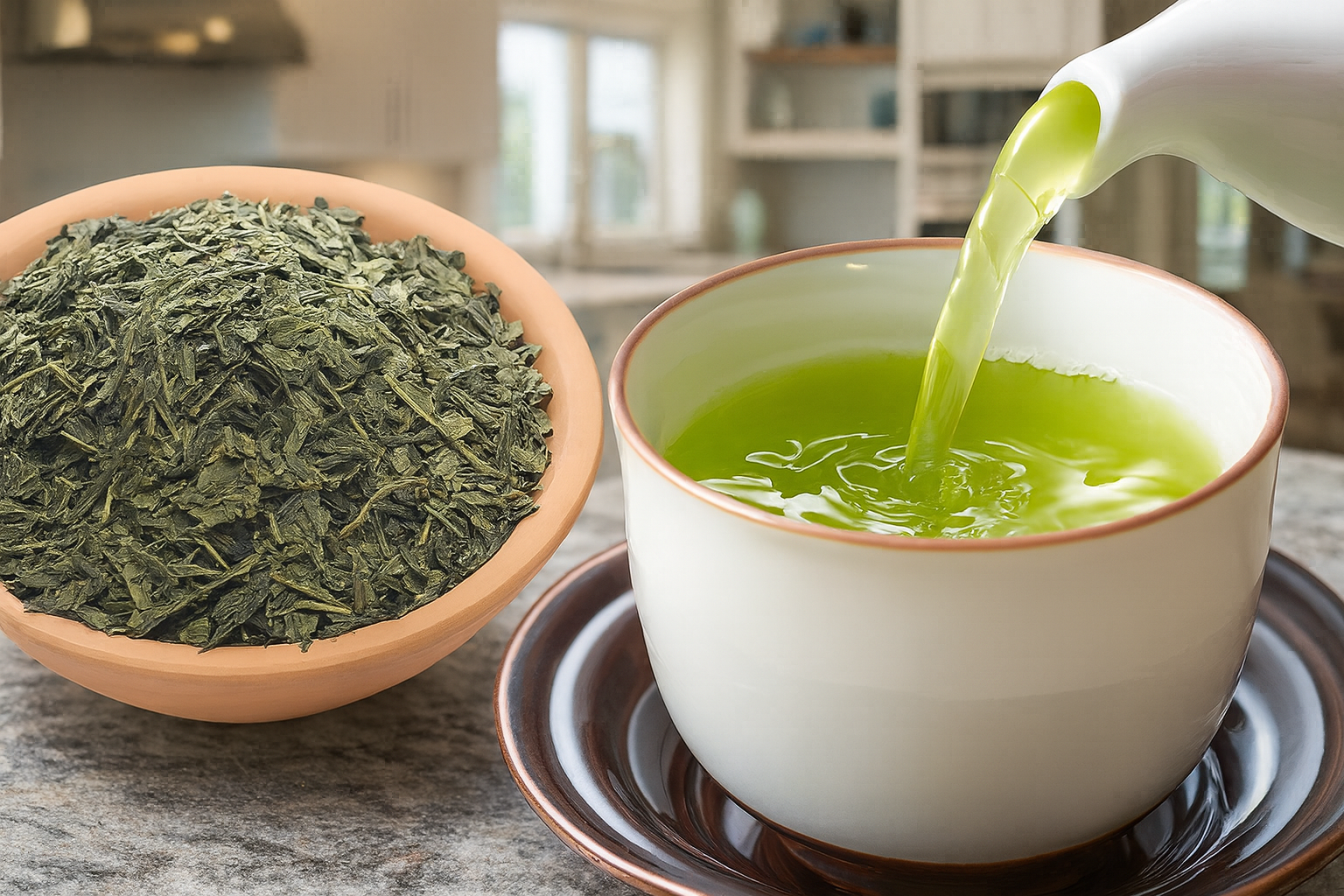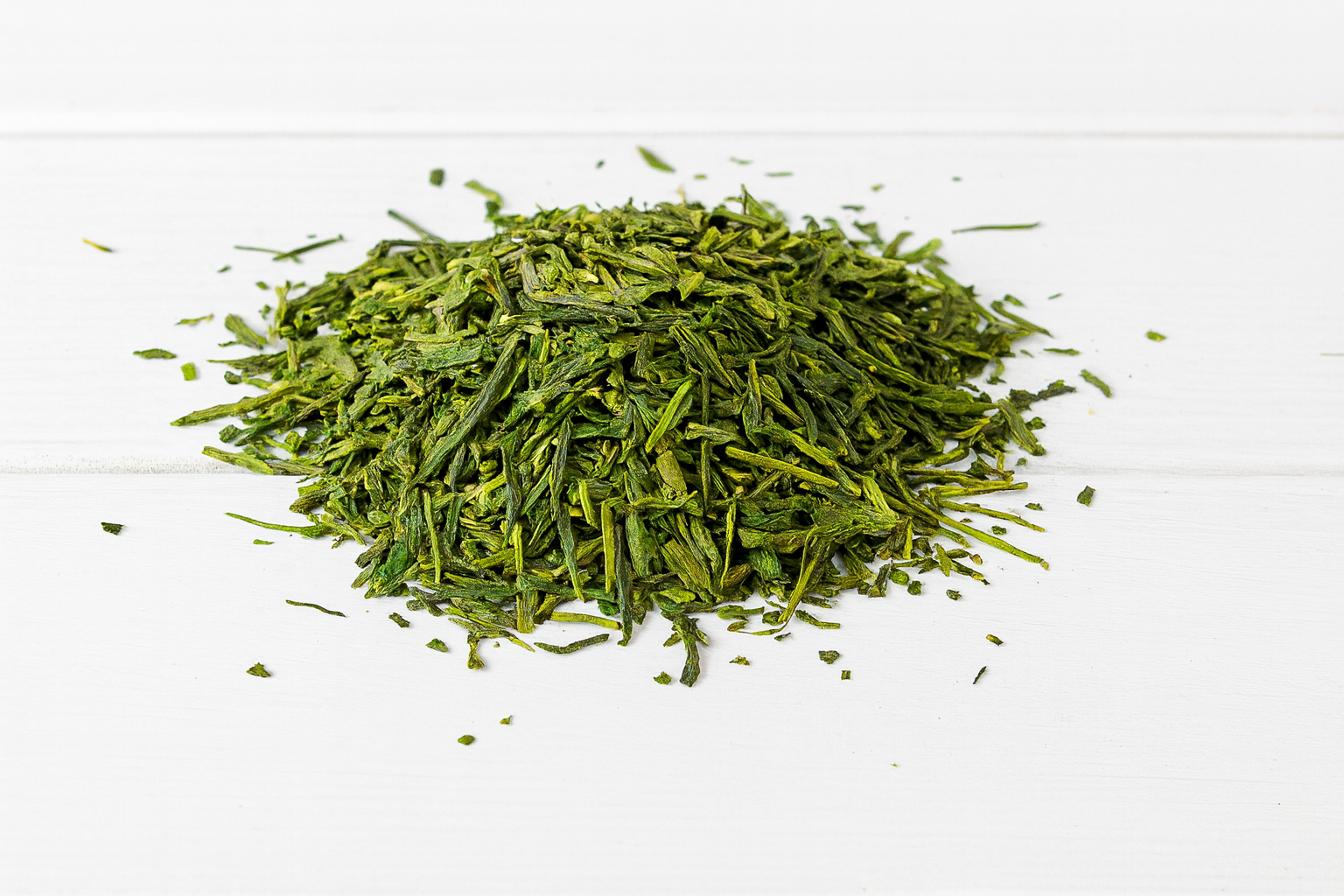Sencha
Bright, vegetal, and umami-rich — the everyday green tea of Japan.
- Category: Steamed green tea (Camellia sinensis)
- Origin: Japan — widely grown in Shizuoka, Kagoshima, Uji (Kyoto), and Fukuoka.
- Harvest: Primarily first flush (ichibancha, late April–May), though second (nibancha) and third (sanbancha) flushes are also produced.
- Grade: Shincha (new tea); High-grade Sencha; Everyday Sencha



Tasting Profile
Brewing Guide
- Tea-to-water ratio~5 g tea leaves per 200 ml water.
- Water temperature70–80 °C (158–176 °F) — lower for premium sencha, slightly higher for everyday grades.
- Steeping timeFirst infusion: 60–90 seconds; shorter for subsequent infusions.
- InfusionsTypically 2–3 good infusions; first brings out umami, second more sweetness, third lighter and brisk.
Background & Story
Sencha is Japan’s most widely consumed green tea, accounting for nearly 70–80% of national tea production. Its bright, grassy flavor and balance of sweetness and umami have made it a daily staple, enjoyed at home, in restaurants, and as the foundation for Japan’s tea culture. Unlike roasted teas such as hojicha or grain blends like genmaicha, sencha offers a pure expression of the green tea leaf.
The processing of sencha begins immediately after harvest. Fresh leaves are briefly steamed to stop oxidation, a method that distinguishes Japanese teas from Chinese pan-fired greens. This steaming, usually lasting 30–120 seconds depending on style, locks in the vivid green color and preserves the vegetal, oceanic aroma. After steaming, leaves are rolled, shaped, and dried, which enhances flavor release when brewed.
There are several regional and stylistic variations of sencha. Shizuoka, Japan’s largest tea-producing region, is known for balanced and refreshing sencha. Uji in Kyoto produces refined, umami-rich versions, while Kagoshima in Kyushu offers teas with bold, lively character thanks to its volcanic soil. Styles also differ by steaming length: asamushi (light-steamed) produces a clear, delicate liquor; fukamushi (deep-steamed) creates a cloudy brew with intense flavor and less astringency.
Harvest season is another key factor. The first flush, called ichibancha or shincha (“new tea”), is prized for its sweetness, high amino acid content, and freshness. Later harvests — nibancha (second flush) and sanbancha (third flush) — are more robust and often used for everyday drinking.
Sencha’s cultural significance lies in its accessibility. It is both refined enough to be gifted and casual enough for daily meals. Whether poured hot to welcome guests, sipped cold in summer, or enjoyed as bottled tea on the go, sencha embodies the Japanese approach to tea: harmony between refreshment, health, and tradition.
Benefits
- Packed with catechins and polyphenols that provide strong antioxidant protection
- Supports heart health by promoting healthy cholesterol and circulation
- Contains L-theanine and caffeine for calm, focused energy
- May aid weight management by boosting metabolism naturally
- Strengthens immunity with vitamins C, E, and essential minerals
Serving Suggestions
Pairings
- Light seafood dishes such as sashimi or grilled white fish
- Steamed rice and simple Japanese pickles (tsukemono)
- Tempura vegetables for a crisp and refreshing balance
- Mildly sweet wagashi like mochi or dorayaki
- Fresh fruit, especially citrus or melon
Teaware
- Kyusu (Japanese side-handle teapot)
- Yunomi (Japanese tea cup)
- Chazutsu (airtight tea canister)
Nutrition Facts
Serving Size: 1 cup brewed Sencha (240 ml)
| Nutrient | Amount per Serving | % Daily Value* |
|---|---|---|
| Calories | 0 | 0% |
| Total Fat | 0 g | 0% |
| Sodium | 0 mg | 0% |
| Total Carbohydrates | 0 g | 0% |
| Protein | 0 g | 0% |
| Vitamin C | 6–12 mg | 8–15% |
| Vitamin A (beta-carotene) | Trace | <1% |
| Calcium | 3–5 mg | <1% |
| Potassium | 25–40 mg | <2% |
| Magnesium | 2–4 mg | 1% |
| Caffeine | 20–30 mg | — |
| L-theanine | 8–12 mg | — |
| Catechins (EGCG) | 30–60 mg | — |
| Polyphenols | 70–90 mg | — |
| Chlorophyll | Present (moderate) | — |
**Percent Daily Values are based on a 2,000 calorie diet.
† Compounds such as caffeine, L-theanine, catechins, polyphenols, and chlorophyll do not have established %DV but are key contributors to Sencha’s health benefits.



